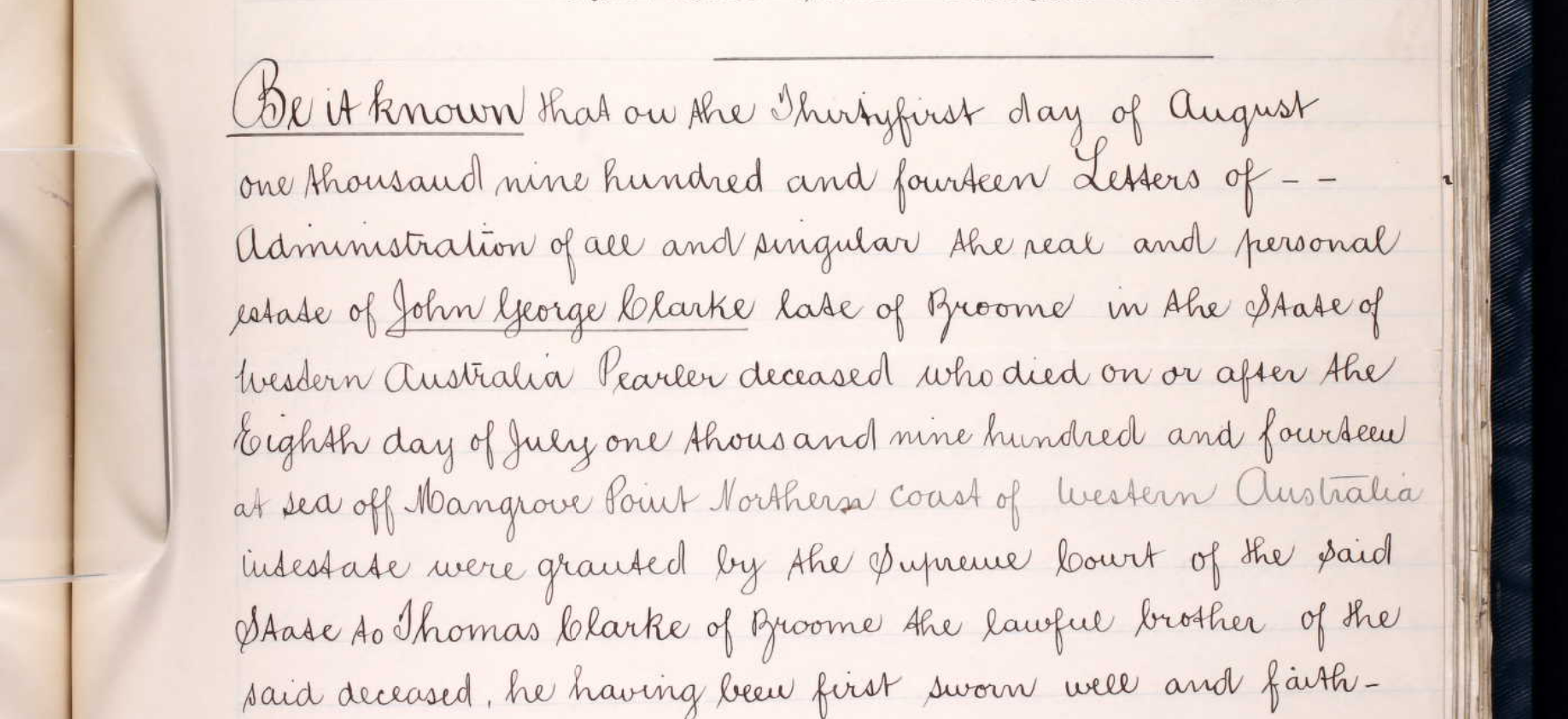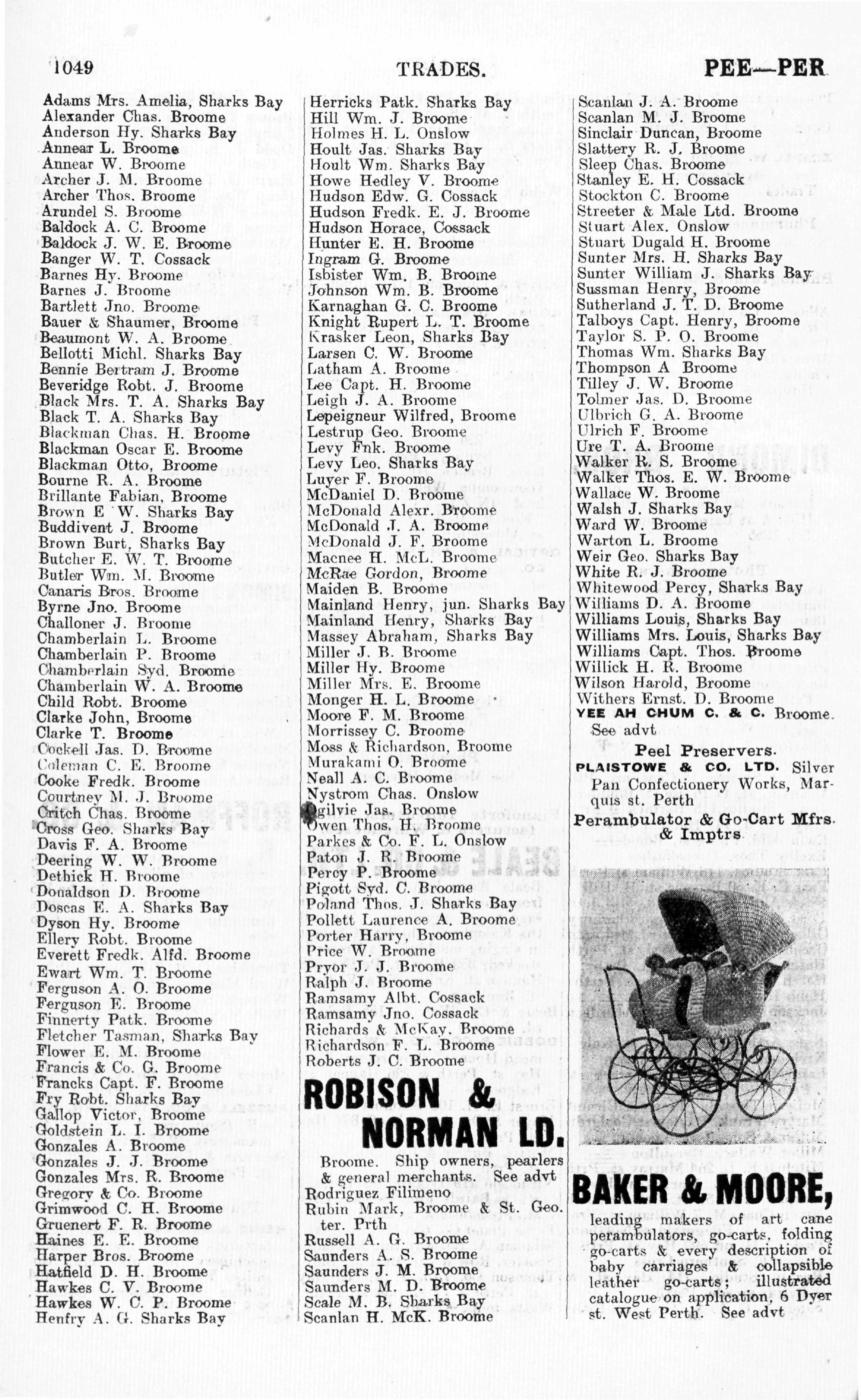Tom Ure and Jack Clarke
Vessel Name: Henry and Neta
Thomas (Tom) Alexander Ure
John George (Jack) Clarke
Drowned while rowing dinghy from Neta to Henry; bodies not recovered
8 July 1914


Thomas Alexander (Tom) Ure and John George (Jack) Clarke were owners, partners and masters of Henry B351 and Neta B201, pearling luggers working out of Broome. They were anchored 24 kms southwest from Cape Jaubert.
It had been a slow day, and Tom decided to go across and see Jack for the evening. Tom’s crew rowed him over to the Neta and he told them he would signal when he was ready to return to the Henry.
Tom also had a partnership with Walter Raleigh Colt in the Alinora B350. Each boat had seven or eight crew members: master, diver, tender and four pump men/deckhands. Deckhands took turns cooking for the crew. The divers and tenders were Japanese, and the pump hands were Timorese Koepangers.
In 1914 Henry’s crew was comprised of master Tom Ure, diver Kango Sheosaki, tender Ochi Yeosiiso, and pump hands Baba Wara, Mathias Mise, Nali Daiso, Ahmat Bin Syed and Tobo Ngahoe.
Henry was a typical two-masted lugger, with 14 tons burthen. She was 38 feet [11.58 metres] long, 12 feet [3.65 metres] across her beam and she drew six feet [1.8 metres] of water. There does not appear to be a record of her registration.
Neta was registered as a 12.33 ton two-masted lugger, built by A.E. Brown of Fremantle in 1904. She was registered as 16 of 1904, with official number 119019. She measured 36.33ft [11.07 m] long, 12 ft [3.65m] beam and 4.66ft [1.4m] draft.
The three partners had decided that they would take their boats in and around the shell fields out from Ninety Mile Beach. They would cover Cygnet Bay in King Sound, south past Broome to Wallal, Condon ad Banningarra Creek. Tom and Jack were experienced pearlers.
Tom and Jack drank spirits aboard Neta until they were rolling drunk. It was a calm night, dark with cloud cover. A front was coming in with some vicious little squalls. The men boarded Neta’s dinghy with some difficulty and began to row towards the riding lights of the Henry. They were almost halfway between the two boats when a sudden gust blew up some steep waves. The dinghy capsized, and Tom and Jack disappeared from view.
Crews from both luggers immediately began to search for the two masters. They had vanished into the dark water.
As the surviving partner, under the terms of the partnership Walter was to sell the boats and equipment. Both Tom and Jack had siblings and had made a will. After probate, the boats and gear were sold.
Henry started a new career fishing for beche-de-mer and trochus shell and became the first boat to survey the Northwest for minerals [See Frank Bass and John Smith Story]. Neta kept working until her old age. She was retired and dismantled on 7 May 1931.
